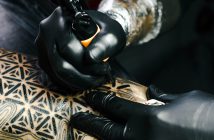When Theodore Brann and his wife and business partner, Anne, of Mission, Texas, created a device that tracked body movements, it was to teach their children how to shoot a perfect free throw.
“Brann had kids who were into sports,” says the Branns’ lawyer, Arnold Shokouhi, managing partner of Dallas-based McCathern PLLC.
Filed on Nov. 21, 1997, and patented by the U.S. Patent and Trademark Office on May 9, 2000, the Branns’ “Training and Safety Device System and Method to Aid in Proper Movement During Physical Activity” became a safety product used to ensure that warehouse employees were lifting properly.
The Branns, operating under LoganTree LP, filed suit against Garmin International in the U.S. District Court for the Western District of Texas in San Antonio, asserting that most of Garmin’s popular fitness watches, including the Fenix, Forerunner, vivo, and Epix models, among others, infringe on their patent.
LoganTree vs. Garmin International is just one example of a proliferation of patent suits unfolding in the growing consumer market for wearables.
The wearables market grew 3.1% year-over-year nationwide in Q3 2016, according to an International Data Corp. survey. That is compared to 13.4 million activity trackers sold in the U.S. in 2015, totaling $1.4 billion, according to an NPD Group study.
Fitness bands accounted for 85% of the wearables market in 2016 with FitBit, Xiaomi and Garmin reporting the highest market shares and year-over-year growth. FitBit captured 23% of the market share during Q3 2016 while Xiaomi and Garmin held 16.5 and 5.7%, respectively.
As more devices enter the market, and as affordable fitness trackers such as FitBits continue to gain popularity, holders of patents that cover a broad set of applicable technology have much to gain from royalties and licensing fees if they prevail in a patent suit.
Mr. Shokouhi said Theodore Brann invented his accelerometer technology in the mid 1990s, long before wearables became a hot product. But with LoganTree’s accelerometer patent expiring on November 21, 2017—20 years from filing—time is of the essence.
For the Branns’ patent to survive dismissal, it may have to overcome an early challenge to the patent’s validity based on the U.S. Supreme Court’s Alice Corporation v. CLS Bank International (2014) decision. That decision laid out a two-part test for evaluating whether an invention was drawn to a “patent-ineligible abstract idea” and therefore not patentable: First, are the patent claims directed to an abstract idea? If so, do the claims recite sufficiently more to transform it into a patent-eligible application of the abstract idea? The patents at issue in Alice were directed to computer-implemented methods for mitigating settlement risk. The Supreme Court ruled the claims were directed to abstract ideas, which are not patentable, and contained no additional elements to render them more than an abstract idea.
In its opinion, the Supreme Court writes that it has long held that laws of nature, natural phenomena, and abstract ideas are ineligible for patent protection. Under case law, the Supreme Court defines abstract idea as a building block of “human ingenuity.” To be eligible for patent protection, the patent must “integrate the building blocks into something more.” While the Supreme Court did not specifically define an abstract idea, courts have identified various basic concepts. Fundamental economic practices, such as hedging against the financial risk of price fluctuations; certain methods of organizing human activity, such as business methods or games; an idea in and of itself, such as comparing a test subject to a control; and mathematical relationships and formulas have all been declared abstract ideas.
“One area where Alice has significantly impacted validity are patents that involve Internet-connected smart devices where the claimed improvements are not technical per se but rather use-based,” Mr. Feller says.
In Alice, the Court held that implementing an abstract idea using a general-purpose computer doesn’t transform the idea into a patentable invention or concept. Inventions that use conventional computer- and communication-related technology as well as devices that collect, analyze, and display data, have not survived Alice challenges.
“Many of these inventions use off-the-shelf technology to collect data, such as heart rate or steps walked, and then analyze the data to give a user useful feedback, such as calories burned, and do not claim an improvement to the technology itself sufficient to move from the abstract idea of data collection and analysis to a patent eligible one,” Mr. Feller says. “This is particularly true for older patents that were issued before Alice was decided.”
A previous suit filed by LoganTree, against fitness tracker giant FitBit, may provide a clue into the Garmin case’s potential outcome.
LoganTree’s complaint against FitBit, filed on Oct. 2, 2015 in the U.S. District Court for the Eastern District of Texas, settled and filed a stipulation of dismissal on March 15, 2017, after FitBit successfully moved to transfer the case to California’s Northern District. The parties also asked the federal court to terminate FitBit’s previous request for Inter Partes Review (IPR) by the U.S. Patent and Trademark Office’s Patent Trial and Appeal Board (PTAB). During the IPR, the PTAB would have reviewed the patentability of one or more of the claims in the Branns’ patent.
Moving forward, Garmin may initiate its own IPR to challenge the patent’s validity. Regardless, litigation will proceed even though the Branns’ patent will likely expire before the federal court decides the case. If Garmin initiates an IPR on the Branns’ expired or almost-expired patent, PTAB applies claim construction standards used in the federal court, which are narrower than PTAB’s “broadest reasonable construction” standard. “This eliminates one of the advantages that a challenger usually has in an IPR,” says Mr. Feller.
The Garmin case is in the early stages of litigation. If the parties don’t enter into a stipulation of dismissal a la FitBit, resolution is more than a year away. Regardless of the outcome, the LoganTree cases provide an example of the prevalence of patent suits in the growing wearables market.
“There are a lot of people filing patents in this area as well, because there is a confluence of different technologies that are now inexpensive and easy to put together for new applications,” says Mr. Feller. “In some ways we’re at the tip of the iceberg.”







2 Comments
You are my aspiration, I own few blogs and occasionally run out from to post .
You could certainly see your expertise in the work you write. The world hopes for more passionate writers like you who are not afraid to say how they believe. Always go after your heart.